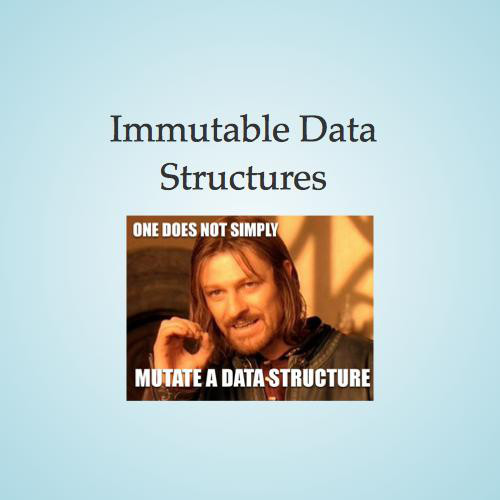Building UIs with Statecharts
@mukeshsoni
reactjs bangalore meetup #34
Building UIs is hard
Maintaining UIs - even harder
UI code is
- Buggier than most other types of programs
-
Difficult to test
- What should we test? Just the happy paths?
- Are snapshot tests enough?
-
Difficult to enhance
- Code quality keeps deteriorating with each enhancement
How we code UIs
Bottom up - No high level design
How we code UIs
Thinking in React
Just draw boxes around UI components!
Only takes you so far!

https://reactjs.org/docs/thinking-in-react.html
Event-action paradigm
- There is a user event -> take a series of actions
- the actions to be executed in response to that event can vary, depending on the previous interactions the user had with other UI objects
-
the action against an event can depend on the state of other UI objects
-
Start by writing simple event handler
- Make them progressively complex to handle various contexts
- Results in complex web of interrelated event handlers
-
The context is not evident from the code
- If(x < y && z > x && loggedIn && (otherObjectVisible || this otherObjectVisible))
- No one wants to touch that code again
- Let's rewrite the component!
Event-action paradigm consequences


if-else-hell
https://github.com/mukeshsoni/react-telephone-input
if-else-hell


Source: Are statecharts the next big UI paradigm? by Luca Matteis
Url: https://www.slideshare.net/lmatteis/are-statecharts-the-next-big-ui-paradigm
Source: Are statecharts the next big UI paradigm? by Luca Matteis
Url: https://www.slideshare.net/lmatteis/are-statecharts-the-next-big-ui-paradigm

Alternative approach - Top down thinking
Finite Automata
Finite state machines
- Abstract machine with finite number of states
- Finite number of inputs/events
- Initial state
- Is only in one state at a time*
- State transition on event
- Deterministic - given a state and an event, transition always returns the same nextState

We all implement an ad-hoc FSM in our UI code!
Problems with FSM
- State explosion
- Event explosion
-
Duplicated states and events
- Does not scale well with increasing complexity
- Not readable for even medium com
CD player with FSM

Source - Constructing the User interface with statecharts by Ian Horrocks
Statecharts
Invented by David Harel in 1987
- Hierarchical states - concept of depth
- Parallel/concurrent states
-
History
- Specially useful in conjunction with hierarchical states
-
Conditionals
- Allow multiple transitions from one state, for same event
- Transient states
CD player with statecharts

Source - Constructing the User interface with statecharts by Ian Horrocks
CD player with FSM

Source - Constructing the User interface with statecharts by Ian Horrocks
Rich text editor - FSM

Source - Constructing the User interface with statecharts by Ian Horrocks
Parallel states

Source - Constructing the User interface with statecharts by Ian Horrocks
Representing statecharts with xstate
xstate - https://github.com/davidkpiano/xstate


Statecharts in React
- xstate to represent the statechart machine
- Map actions in machine to component methods
-
Another method to call xstate machine for transitions and running related actions
- Or you can use react-automata - https://github.com/MicheleBertoli/react-automata
If we are in state S and the event E occurs, we should perform the actions A and make a transition to the state S'.
Erlang FSM Design Principles
http://erlang.org/documentation/doc-4.8.2/doc/design_principles/fsm.html

Advantages
- Well defined semantics to capture the UI
- No ambiguity in
specification - Easy to extend/enhance
- Making impossible states impossible
- Automatic integration test generation - since the statechart is just a graph
- Automatic code generation
- Much better analytics**
Practical tips
- Think in terms high level design for your code
- Don't get bogged down by implementation details
- Resist the urge to code for as long as possible, when you are designing the statechart
- statechart-coding cycle should be iterative
- Start with FSM and then refactor to statecharts
- Figure out higher level states and parallel states
Limitations
- Higher upfront cost
-
Might not see anything on screen for some time
- Build little bit of statechart, code it. rinse and repeat
- Not suitable for all use cases
- Might get complicated if higher level states and parallel states not correctly identified
- Essentially turns into an FSM
- Limitations of visualisation tools
Mars Curiosity Rover - NASA

https://www.popularmechanics.com/space/moon-mars/a19564346/nasas-curiosity-rover-hits-2000-sol-martian-day-milestone/
https://blog.nomagic.com/statechart-autocoding-curiosity-rover/
- Auto-maneuver (Cruise phase)
- Spacecraft Modes (Configures the spacecraft)
- Launch mode
- Cruise mode
- Entry
- Descent
- Landing
- Rover mode
Resources
-
David Khourshid (@davidkpiano) - Infinitely better UIs with Finite Automata - https://www.youtube.com/watch?v=VU1NKX6Qkxc
- https://statecharts.github.io/ by Erik Mogensen (@mogsie)
- David Harel - Statecharts: A visual formalism for complex systems - http://www.inf.ed.ac.uk/teaching/courses/seoc/2005_2006/resources/statecharts.pdf
- Ryan Florence - Rambling thoughts on React and Finite State Machine - https://www.youtube.com/watch?v=WbhpQXH7XMw
-
Ian Horrocks - Constructing the user interface with statecharts - https://www.amazon.com/Constructing-User-Interface-Statecharts-Horrocks/dp/0201342782
- Only for Rs. 16500 :)
- Statechart calculator implementation - https://codesandbox.io/s/84o732y148
- For online discussions on statecharts - https://spectrum.chat/statecharts
Thank you!
Building UIs with statecharts
By mukeshsoni
Building UIs with statecharts
Top down approach to building UIs. The current way to build User Interfaces is bottom-up. Draw UI elements, hook them up to event handlers and fill in the event handler logic. A top down approach is better because it forces designers/developers to think in greater detail upfront and capture that in a visual tool with good semantics. The visual tool we select is super important in the whole process. Statecharts are a very good choice for modelling UIs in this top down fashion.
- 795


